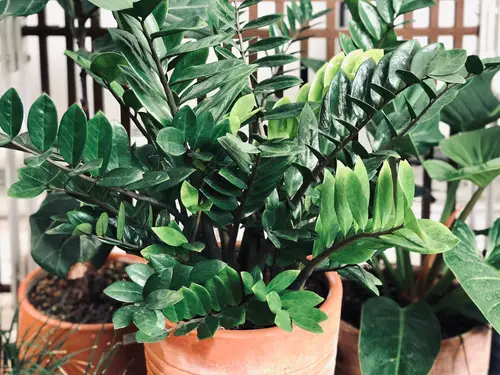ZZ plants are a popular choice for indoor gardening enthusiasts, thanks to their hardy nature and low maintenance requirements. However, even these hardy plants are susceptible to drooping branches, which can be a cause for concern for plant owners.
ZZ plant branches drooping can be caused by a range of factors, including watering issues, poor lighting, and soil problems.
Understanding ZZ plant drooping is the first step towards treating the issue. ZZ plants are known for their ability to store water in their roots, which makes them tolerant of periods of drought.
However, overwatering can lead to root rot and other problems that can cause the plant to droop. Poor lighting can also cause ZZ plant branches to droop, as the plant needs bright but indirect light to thrive. Soil problems, such as poor drainage or nutrient deficiencies, can also cause ZZ plant branches to droop.
Check out these other top posts:
- Snake Plant One Leaf Drooping
- Snake Plant Leaves Curling and Drooping
- Young Sunflower Plant Drooping
Understanding ZZ Plant Drooping
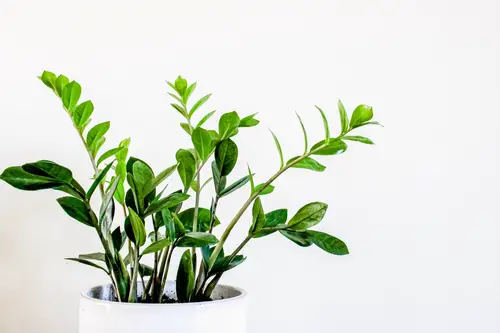
ZZ plants are popular houseplants that can add a touch of green to any indoor setting. However, ZZ plants can sometimes experience drooping branches, which can be alarming for plant owners. In this section, we will explore the reasons behind ZZ plant drooping and how to address them.
1. Physical Damage
Physical damage is one of the most common reasons behind ZZ plant drooping. ZZ plants have delicate stems that can easily break or bend under pressure. Drooping stems and leaves can be a sign of physical damage.
If the plant has been knocked over or bumped into, it may experience drooping branches. In such cases, it is essential to inspect the plant for any visible damage and provide support to the affected stems.
2. Stress
Stress is another reason behind ZZ plant drooping. ZZ plants can experience stress due to various factors, including temperature changes, lighting conditions, and humidity levels.
Stress can cause the plant to droop or wilt, and the leaves may turn yellow or brown. It is essential to identify the source of stress and address it accordingly to prevent further damage to the plant.
3. Leggy Growth
Leggy growth is a common problem with ZZ plants that can cause drooping branches. Leggy growth occurs when the plant is not receiving enough light, causing the stems to stretch out and become weak. In such cases, it is essential to provide the plant with adequate light to prevent further leggy growth and drooping branches.
4. Stunted Growth
Stunted growth is another reason behind ZZ plant drooping. Stunted growth occurs when the plant is not receiving enough nutrients, causing the stems to become weak and droop. In such cases, it is essential to provide the plant with proper nutrients, including fertilizers, to promote healthy growth and prevent drooping branches.
5. Transplant Shock
Transplant shock can also cause ZZ plant drooping. Transplant shock occurs when the plant is moved to a new pot or location, causing stress to the roots and stems. In such cases, it is essential to provide the plant with proper care, including adequate watering and lighting, to help it recover from transplant shock.
Watering Issues and Solutions

ZZ plants are sensitive to overwatering and underwatering, which can cause the branches to droop. Proper watering is crucial to maintain the health and appearance of ZZ plants. This section will discuss common watering issues and solutions to help prevent ZZ plant branches from drooping.
1. Dehydration
Underwatering is a common issue that can lead to ZZ plant branches drooping. ZZ plants are native to dry regions of Africa and can tolerate drought conditions. However, if they are not watered properly, the leaves and branches will start to droop. ZZ plants need to be watered when the top inch of soil is dry to the touch.
To prevent dehydration, ZZ plants should be watered regularly, but not excessively. It is recommended to water ZZ plants every 2-3 weeks, depending on the environmental conditions and the size of the plant. Using a moisture meter can help determine when it is time to water the ZZ plant.
2. Root Rot
Overwatering is another common issue that can cause ZZ plant branches to droop. Excess water can lead to root rot, which can be fatal to the plant. ZZ plants are susceptible to root rot, especially if they are planted in a pot without proper drainage.
To prevent root rot, ZZ plants should be planted in a well-draining potting mix and placed in a pot with drainage holes. It is also important to avoid overwatering and to allow the soil to dry out between watering. If ZZ plants show signs of root rot, such as yellowing leaves or a foul smell, it may be necessary to repot the plant in fresh soil.
3. Anaerobic Bacteria
Overwatering can also lead to the growth of anaerobic bacteria, which can cause ZZ plant branches to droop. Anaerobic bacteria thrive in waterlogged soil and can produce toxic byproducts that can harm the plant.
To prevent the growth of anaerobic bacteria, ZZ plants should not be overwatered, and excess water should be allowed to drain from the pot. It is also recommended to use a well-draining potting mix and to avoid planting ZZ plants in soil that is too dense or compact.
Lighting and ZZ Plant
ZZ plants are known for being low maintenance and easy to care for, but one of the most common reasons for drooping branches is incorrect lighting. ZZ plants are adaptable to a variety of light conditions, but they do have specific requirements that must be met for optimal growth.
Low Light
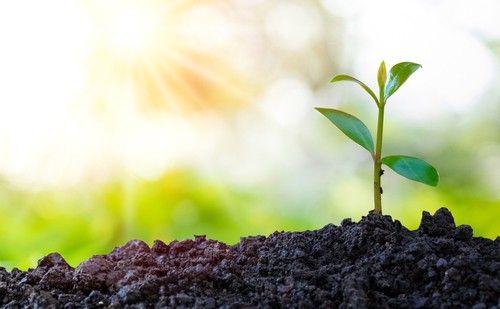
One of the most common reasons for ZZ plant drooping is a lack of light. ZZ plants can tolerate low light conditions, but they require bright, indirect light to thrive. If a ZZ plant is not receiving enough light, it will begin to droop and its growth will slow down. In extreme cases, the plant may even stop growing altogether.
To prevent ZZ plant drooping due to low light, it’s important to place the plant in a spot that receives bright, indirect light. If natural light is not available, artificial light sources can be used to supplement the plant’s light requirements.
Photosynthesis
ZZ plants, like all plants, require light for photosynthesis. Photosynthesis is the process by which plants convert light energy into chemical energy, which is used to fuel growth and other metabolic processes. ZZ plants are adapted to low light conditions, but they still require a certain amount of light to carry out photosynthesis.
If a ZZ plant is not receiving enough light, it will not be able to carry out photosynthesis effectively. This can lead to a buildup of excess energy in the plant’s cells, which can cause damage and lead to drooping branches.
To ensure that a ZZ plant is receiving enough light for photosynthesis, it’s important to place the plant in a spot that receives bright, indirect light. Direct sunlight should be avoided, as it can cause the plant to burn and droop. If the plant is not receiving enough light, artificial light sources can be used to supplement its light requirements.
Soil and Drainage
When it comes to ZZ plants, soil and drainage are crucial factors that can impact the health of the plant. In this section, we will discuss the importance of good soil and drainage for ZZ plants and how to prevent drooping branches.
Fungi
One of the most common reasons for ZZ plant branches to droop is due to fungal infections caused by overwatering and poor drainage. ZZ plants are susceptible to fungal infections, which can cause the roots to rot and eventually lead to the death of the plant.
To prevent fungal infections, it is essential to ensure that the soil is well-draining and that there are no standing water in the drainage holes or saucer.
Rootbound
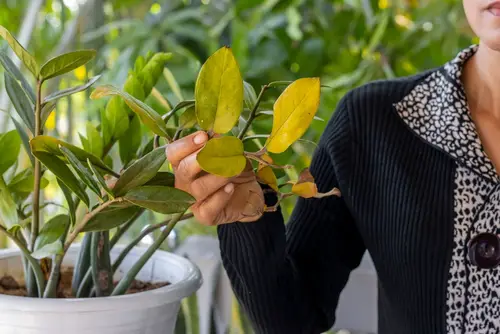
Another common cause of ZZ plant drooping branches is being rootbound. ZZ plants have a tendency to become rootbound, which means that the roots have outgrown the pot and are tightly packed together.
When this happens, the roots can’t absorb water and nutrients properly, leading to drooping branches. To prevent this, it is essential to repot the ZZ plant into a larger pot with fresh soil every 2-3 years.
When it comes to soil for ZZ plants, it is best to use a well-draining soil mix that contains perlite, vermiculite, or sand. These materials help to improve drainage and prevent the soil from becoming waterlogged.
It is also important to ensure that the soil is not too wet or too dry. ZZ plants prefer to have slightly dry soil, so it is essential to water them only when the top inch of soil is dry to the touch.
Fertilizer and ZZ Plant
ZZ plants are known for their ability to thrive in low light conditions and neglect, but they still need the right nutrients to grow and remain healthy. Fertilizing ZZ plants is important to ensure they receive the necessary nutrients to support growth and maintain their lush appearance.
Balanced
ZZ plants require balanced fertilizer that contains equal amounts of nitrogen, phosphorus, and potassium. These three macronutrients are essential for plant growth and development.
Nitrogen is necessary for the production of chlorophyll, which is essential for photosynthesis. Phosphorus is important for root development and flower production, while potassium helps with overall plant health and disease resistance.
It is important to note that ZZ plants do not require a lot of fertilizer. Over-fertilizing can lead to salt buildup in the soil, which can damage the roots and cause the plant to droop. ZZ plants should be fertilized once every two to three months during the growing season, which is typically from spring to fall.
When fertilizing ZZ plants, it is best to use a slow-release fertilizer that will provide nutrients over an extended period of time. This will prevent the plant from being overwhelmed with too many nutrients at once. It is also important to follow the instructions on the fertilizer package and not exceed the recommended dosage.
If a ZZ plant is drooping due to lack of fertilizer, it may be necessary to apply a balanced fertilizer to the soil. It is important to note that ZZ plants can go without fertilizer for extended periods of time, so it is best to start with a small amount and gradually increase as needed.
Repotting and Transplanting
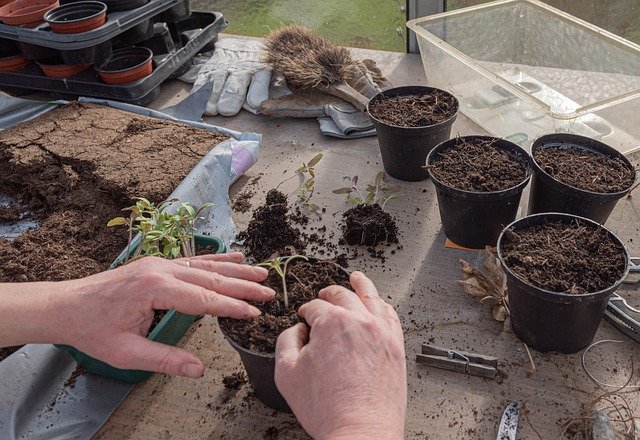
When ZZ plants start to droop, it might be time to consider repotting or transplanting the plant. Repotting involves moving the plant to a new pot, while transplanting involves moving the plant to a new location in the garden or a larger container. Both can help to reduce transplant stress and prevent further root damage.
Bulbs
ZZ plants have underground bulbs that store water and nutrients. When repotting, it is important to be gentle with the bulbs to prevent damage. Bulbs that have been damaged may not produce new growth, and the plant may continue to droop.
When repotting, choose a pot that is slightly larger than the current one. Fill the bottom of the new pot with a layer of fresh potting soil, and place the plant in the center. Fill the remaining space with soil, leaving about an inch of space at the top. Water the plant thoroughly and allow the soil to settle.
Rhizomes
ZZ plants also have rhizomes, which are underground stems that produce roots and shoots. When transplanting, it is important to be careful not to damage the rhizomes. Damaged rhizomes may not produce new growth, and the plant may continue to droop.
To transplant a ZZ plant, dig a hole that is slightly larger than the root ball. Gently remove the plant from its current location, being careful not to damage the rhizomes. Place the plant in the new location and backfill the hole with soil. Water the plant thoroughly and allow the soil to settle.
In both cases, it is important to monitor the plant for signs of stress, such as wilting or yellowing leaves. Water the plant as needed, but be careful not to overwater, as this can lead to root rot. With proper care, a repotted or transplanted ZZ plant can recover and thrive.
Temperature and Humidity
ZZ plants are known to be hardy and can tolerate a range of temperatures, but they do have their limits. Low temperatures can cause the branches to droop, and the plant may even experience leaf drop. ZZ plants prefer temperatures between 60-75°F (15-24°C), and they will not tolerate temperatures below 45°F (7°C) for extended periods.
Humidity is also a factor that can affect the health of ZZ plants. Low humidity can cause the leaves to curl and the plant to droop. ZZ plants prefer a moderate to high humidity level of around 40-60%. If the humidity is too low, it can be increased by placing a tray of water near the plant or by using a humidifier.
Oxygen

Another important factor that can affect the health of ZZ plants is the amount of oxygen in the soil. Overwatering or poor drainage can cause the soil to become waterlogged, which can reduce the amount of oxygen available to the roots. This can cause the plant to droop and the leaves to turn yellow.
To ensure that the soil has good drainage and that there is enough oxygen available to the roots, it is important to use a well-draining soil mix and to allow the soil to dry out between waterings. ZZ plants prefer to be slightly dry, so it is better to underwater than to overwater.
Care and Maintenance
Taking care of your ZZ plant is easy and requires minimal effort. ZZ plants are slow growers and are known for their low-maintenance nature, making them a reliable indoor plant for any home. Here are some tips on how to care for and maintain your ZZ plant.
1. Pruning
Pruning is an essential part of ZZ plant care. It helps to promote healthy growth and prevent the plant from getting too large. ZZ plants are known for their slow growth, so pruning is not required often.
However, if you notice any yellow or damaged leaves, it’s best to remove them immediately. Use a pair of sharp, clean scissors to make a clean cut at the base of the leaf stem.
2. Owner
As a ZZ plant owner, it’s essential to understand the growing conditions that are ideal for your plant. ZZ plants prefer bright, indirect light, but they can also tolerate low light conditions. They are also sensitive to over-watering, so it’s crucial to allow the soil to dry out between waterings.
ZZ plants are native to eastern Africa, so they can tolerate dry conditions and do not require high humidity.
3. Feng Shui
In Feng Shui, ZZ plants are known to bring good luck and positive energy into the home. They are believed to help purify the air and promote a sense of calm and relaxation. Placing a ZZ plant in the east, southeast, or south areas of your home is said to bring good luck and prosperity.
Treatment of Drooping ZZ Plant

When a ZZ plant’s branches start drooping, it’s essential to act quickly to save the plant. The treatment of drooping ZZ plant depends on the underlying cause of the problem.
1. Watering
One of the most common reasons for drooping ZZ plants is overwatering or underwatering. If the soil is too wet or too dry, it can cause wilting and drooping. ZZ plants are native to dry climates, so they don’t need much water.
To treat a ZZ plant with drooping branches due to overwatering, the first step is to stop watering the plant for a few days. Check the soil moisture level with a moisture meter or by sticking your finger into the soil.
If the soil is still wet, wait a few more days before watering again. If the soil is dry, water the plant thoroughly, but make sure the excess water drains away.
If the ZZ plant is drooping due to underwatering, water the plant thoroughly and wait for the excess water to drain away. Then, water the plant again when the soil is dry to the touch.
2. Temperature and Humidity
ZZ plants prefer warm temperatures between 65°F and 75°F (18°C to 24°C). If the temperature drops below 60°F (15°C), the plant may start to wilt and droop.To treat a ZZ plant with drooping branches due to temperature, move the plant to a warmer location and avoid placing it near drafts or air conditioning vents.
Low humidity can also cause ZZ plant branches to droop. To increase humidity, place a tray of water near the plant or use a humidifier.
3. Fertilization
ZZ plants don’t need much fertilizer, and overfertilization can cause wilting and drooping. To treat a ZZ plant with drooping branches due to overfertilization, stop fertilizing the plant and water it thoroughly to flush out excess fertilizer from the soil.
4. Pruning
If the ZZ plant’s branches are drooping due to damage or disease, it may be necessary to prune the affected branches. Use clean, sharp pruning shears to remove the damaged branches, cutting just above a leaf node.
Frequently Asked Questions
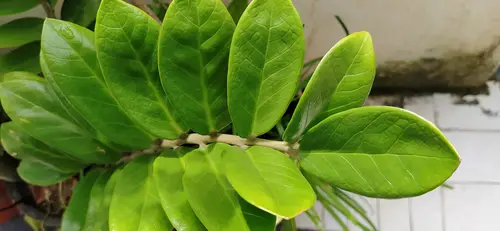
How to fix leggy ZZ plant
Leggy ZZ plants can be fixed by pruning them back to encourage new growth. They can also be repotted in fresh soil and given more light to help them grow bushier.
How to prune ZZ plant
To prune a ZZ plant, use sharp, clean scissors or pruning shears to cut back the stems to just above a leaf node. This will encourage new growth and help the plant to become bushier.
ZZ plant stems too heavy
If the stems of a ZZ plant are too heavy, it may be because the plant is not getting enough light. Try moving it to a brighter location and see if that helps. If the stems are still too heavy, you can use stakes or supports to prop them up.
ZZ plant dropping leaves
If a ZZ plant is dropping leaves, it may be because it is not getting enough water or because it is being overwatered. Check the soil moisture level and adjust your watering accordingly. ZZ plants prefer to dry out between waterings.
Why is my ZZ plant turning yellow
Yellowing leaves on a ZZ plant can be a sign of overwatering, underwatering, or a lack of nutrients. Check the soil moisture level and adjust your watering accordingly. ZZ plants also benefit from occasional fertilization.
How to make ZZ plant bushy
To make a ZZ plant bushy, prune it back regularly to encourage new growth. You can also repot it in fresh soil and give it more light to help it grow fuller.

Hey, I’m Lisa and I’ve been an avid gardener for over 30 years. I love writing, talking and living in the garden! Feel free to connect with me on my socials below

